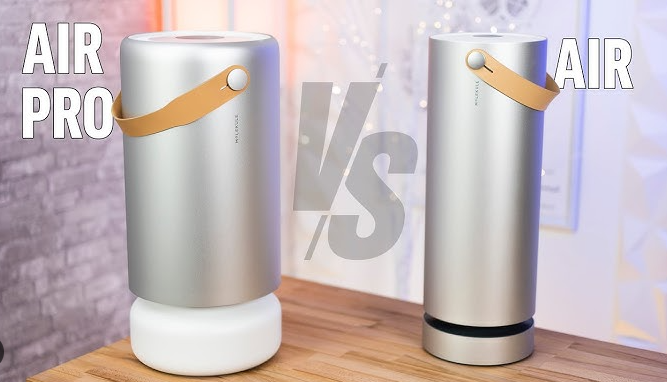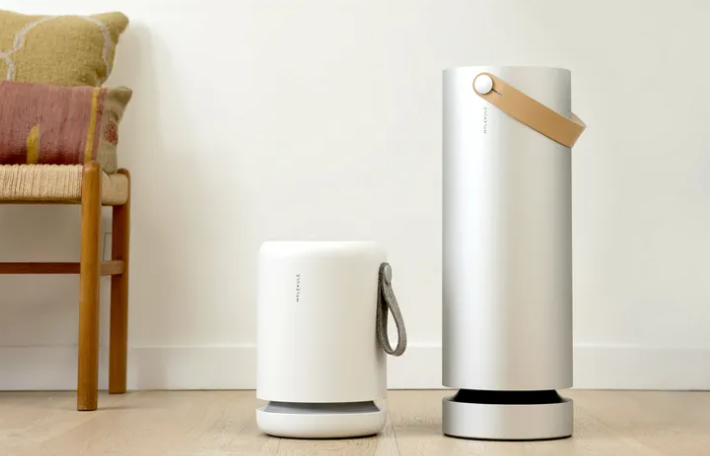Understanding how much electricity does an air purifier use is essential for managing energy costs while maintaining clean, healthy indoor air. Air purifiers are valuable tools for removing pollutants, allergens, and odors, but their energy consumption can vary based on model, settings, and usage. In this detailed guide, we’ll explore the factors that determine how much electricity does an air purifier use, provide tips for optimizing energy efficiency, and offer advice on air purifier setup, maintenance, and troubleshooting to keep costs low. Whether you’re using a portable air purifier or a larger unit, this article will help you balance air quality and energy savings.
Why Knowing How Much Electricity an Air Purifier Uses Matters
Air purifiers can run continuously to maintain clean air, so understanding how much electricity does an air purifier use helps you budget for operating costs and make informed choices about usage. Energy-efficient models can reduce your electricity bill while still providing effective air purification. By mastering air purifier maintenance and smart usage habits, you can minimize energy consumption without sacrificing performance. This guide will break down the key factors affecting electricity usage and offer practical air purifier tips to keep your device eco-friendly and cost-effective.
Factors That Affect Air Purifier Electricity Usage
Several factors influence how much electricity does an air purifier use. Understanding these can help you choose an energy-efficient model and optimize its operation:
- Model and Size: Larger air purifiers designed for bigger rooms typically consume more electricity than compact portable air purifier models suited for smaller spaces.
- Fan Speed Settings: Higher fan speeds require more power. Auto mode or lower settings use less electricity but may reduce air circulation.
- Filter Type: HEPA filters and activated carbon filters don’t directly consume electricity, but clogged filters can force the motor to work harder, increasing power usage.
- Usage Duration: Running an air purifier 24/7 will use more electricity than occasional use, though continuous operation is often recommended for optimal air quality.
- Energy-Saving Features: Modern air purifiers with eco modes, auto shut-off, or energy-efficient motors consume less power.
- Room Conditions: High-pollution environments (e.g., homes with pets or smokers) may require higher fan speeds, increasing electricity usage.
By considering these factors, you can better estimate and control your air purifier’s energy consumption. For more guidance, explore our clean air guide.
Typical Electricity Usage of Air Purifiers
Air purifiers typically consume between 5 and 150 watts per hour, depending on the model and settings. Here’s a breakdown of average electricity usage by type:
- Portable Air Purifiers: Compact models for small rooms (100–200 square feet) use 5–30 watts on low settings, similar to a light bulb.
- Mid-Range Air Purifiers: Units for medium-sized rooms (200–400 square feet) consume 30–80 watts, depending on fan speed.
- Large Air Purifiers: Models for larger spaces (400+ square feet) may use 80–150 watts, especially on high settings.
- Whole-House Air Purifiers: Integrated into HVAC systems, these can use 100–200 watts or more, though they operate intermittently with the HVAC system.
To estimate monthly costs, multiply the wattage by hours used and your local electricity rate (e.g., $0.15 per kilowatt-hour). For example, a 50-watt air purifier running 24 hours a day for 30 days uses 36 kWh (50 watts x 24 hours x 30 days ÷ 1000), costing about $5.40 per month at $0.15/kWh.
Calculating Your Air Purifier’s Electricity Costs
To determine how much electricity does an air purifier use for your specific model, follow these steps:
- Check the Wattage: Look for the wattage rating in the user manual or on the purifier’s label. It’s usually listed for different fan speeds (e.g., 20W low, 50W high).
- Estimate Usage Hours: Calculate how many hours per day you run the purifier. Continuous use is 24 hours; part-time use might be 8–12 hours.
- Find Your Electricity Rate: Check your utility bill for the cost per kilowatt-hour (kWh). The U.S. average is about $0.15/kWh, but rates vary by region.
- Calculate Monthly Cost: Use the formula: (Wattage x Hours per Day x Days per Month ÷ 1000) x Cost per kWh. For example, a 30-watt purifier running 12 hours daily for 30 days uses 10.8 kWh (30 x 12 x 30 ÷ 1000), costing $1.62 at $0.15/kWh.
These calculations help you budget for your air purifier’s energy costs and identify ways to save.

Tips to Reduce Air Purifier Electricity Usage
Optimizing your air purifier’s energy consumption can lower costs while maintaining air quality. Here are practical air purifier tips to save electricity:
Use Energy-Saving Modes
Many modern air purifiers have eco or auto modes that adjust fan speed based on air quality, reducing power usage when high performance isn’t needed. Use these settings for daily operation to minimize electricity consumption.
Run Only When Necessary
In low-pollution environments or during seasons with fewer allergens, consider running the purifier part-time (e.g., 8–12 hours daily) instead of 24/7. For example, use it at night in the bedroom for allergy relief.
Keep Filters Clean
Clogged filters force the motor to work harder, increasing electricity use. Regular air purifier cleaning is key:
- Replace HEPA filters every 6–12 months and activated carbon filters every 3–6 months.
- Clean washable pre-filters every 1–2 months with a vacuum or mild soap and water.
- Check filter condition monthly to prevent clogs.
Optimize Air Purifier Setup
Proper air purifier setup improves efficiency and reduces energy waste:
- Place the purifier in an open area with at least 12 inches of clearance to ensure unobstructed airflow.
- Avoid running the purifier in overly large rooms, as it may require higher fan speeds, consuming more electricity.
- Use a portable air purifier for targeted rooms rather than a larger unit for the whole house.
Close Windows and Doors
Keep windows and doors closed to prevent outdoor pollutants from entering, allowing the purifier to work more efficiently and use less power.
For more energy-saving tips, visit our filter maintenance tips page.
Air Purifier Troubleshooting: Energy-Related Issues
If your air purifier seems to be using more electricity than expected, try these air purifier troubleshooting steps:
- High Fan Speed Stuck: If the purifier is constantly running on high, check the auto mode or air quality sensor. Clean the sensor with a soft, dry cloth to ensure accurate readings.
- Clogged Filters: A dirty filter can increase power consumption. Inspect and replace or clean filters as needed.
- Motor Strain: Unusual noises or overheating may indicate a struggling motor, which can use more electricity. Inspect for blockages and ensure proper maintenance.
- Power Surges: Ensure the purifier is plugged into a stable outlet to avoid electrical issues that could affect efficiency.
Addressing these issues can help keep your air purifier’s electricity usage in check.
How to Clean with an Air Purifier to Save Energy
Using your air purifier during cleaning tasks can stir up dust, forcing the unit to work harder and use more electricity. Here’s how to clean with an air purifier to minimize energy consumption:
- Run at Medium Speed: Use a medium fan speed during cleaning to capture airborne particles without overworking the motor.
- Position Strategically: Place the purifier near the cleaning area but away from direct debris to avoid clogging filters.
- Clean Filters Post-Cleaning: After heavy cleaning, check and clean pre-filters to maintain airflow and efficiency.
These practices reduce strain on the purifier, helping it use less electricity.

Choosing an Energy-Efficient Air Purifier
Selecting an energy-efficient air purifier can significantly reduce how much electricity does an air purifier use. According to the best air purifier guide, look for these features:
- Energy Star Certification: Choose models with Energy Star ratings for proven energy efficiency.
- Low Wattage: Opt for purifiers with lower wattage (e.g., 5–50 watts) for small to medium rooms.
- Auto and Eco Modes: These features adjust power usage based on air quality, saving electricity.
- Portable Air Purifiers: Compact models are often more energy-efficient, making them ideal for targeted use in smaller spaces.
Choosing the right model can lower your electricity costs while maintaining air quality. For recommendations, visit airpurifierr.com.
Air Purifier Safety: Energy-Saving Practices
Following air purifier safety practices can help reduce electricity usage and protect your device:
- Use a Stable Outlet: Plug the purifier directly into a wall outlet to avoid power fluctuations that could increase consumption.
- Avoid Overloading Circuits: Don’t plug multiple high-power devices into the same outlet to prevent electrical issues.
- Keep Dry: Place the purifier in a dry area to avoid moisture damage to the motor, which could affect efficiency.
Conclusion: Understanding How Much Electricity Does an Air Purifier Use
Knowing how much electricity does an air purifier use empowers you to make cost-effective choices while enjoying cleaner air. By selecting an energy-efficient model, practicing regular air purifier maintenance, and optimizing air purifier setup, you can minimize electricity costs without compromising performance. Addressing issues through air purifier troubleshooting and using air purifier tips like eco modes and strategic cleaning can further reduce energy consumption.
Whether you’re using a portable air purifier or a larger unit, these strategies will help you balance air quality and energy savings. For more expert advice on choosing and maintaining an energy-efficient air purifier, visit airpurifierr.com. Breathe cleaner air and save on electricity costs today!